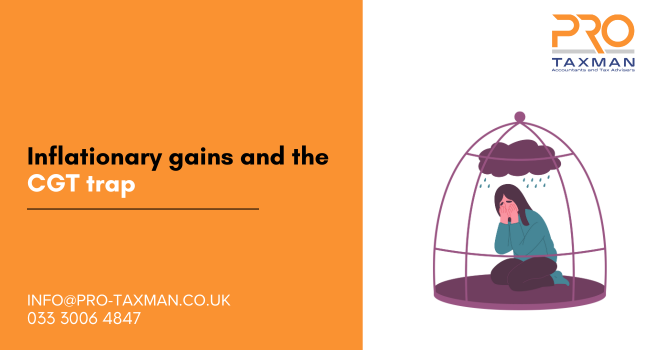The current capital gains tax rules do not provide any relief for inflationary gains. This can mean that when an investment property or second home which has been owned a long time is sold, there is a significant amount of capital gains tax to pay. The rules effectively treat the entire gain over the period of ownership as if it were a gain in the year of disposal, such that only the current year’s annual exempt amount is available to reduce the amount of the gain. This can be particularly problematic if equity has been withdrawn from the property to provide deposits for further investment properties.
The following example illustrates the problem.
Example
Lucy purchased a two-bedroom property in 2004 for £120,000. In 2024, the property is worth £280,000. Lucy has re-mortgaged the property several times to fund deposits on further properties to expand her rental portfolio. The property currently has a mortgage of £250,000.
As a result of the rise in interest rates, Lucy now wishes to sell the property.
The incidental costs of sale and acquisition are £10,000.
The gain on the disposal is £150,000 (£280,000 – £120,000 – £10,000). Lucy has yet to use her annual exempt amount of £6,000 (2023/24 rate), which reduces the chargeable gain to £144,000.
As Lucy is a higher rate taxpayer, she must pay capital gains tax of £40,320 (£144,000 @ 28%) within 60 days of the completion date. The proceeds are not sufficient to pay the tax and clear the loan.
Had Lucy instead invested in shares and sold sufficient shares each year to use up her annual exempt amount, she would have been able to realise a significant tax-free gain over the same 20-year period.
When Lucy purchased the property, she was able to buy a two-bedroom property at the market rate. However, selling the property many years later and paying capital gains tax on the entire gain over the period of ownership means that she would not have sufficient funds should she wish to reinvest in an equivalent property. Capital gains tax is payable even though the property has simply increased in line with inflation, and the longer the property is held, the more of a problem this becomes.
The position is exacerbated because capital gains tax, which was introduced in 1965, has not been rebased since 1982.
Think ahead
When looking to property as a long-term investment, for example, to provide funds for retirement, the inflationary gains trap should be borne in mind. Paying capital gains on sizeable inflationary gains where a property has been held for many years will seriously reduce the funds available when the property is sold.
Need professional accounting service or tax advice? Contact us to book a 15-min Free Consultation with us today.
To find out more please follow us on Facebook, Twitter, or LinkedIn. Feel free to contact us on 0333 006 4847 or request a call back by texting 075 6464 7474

